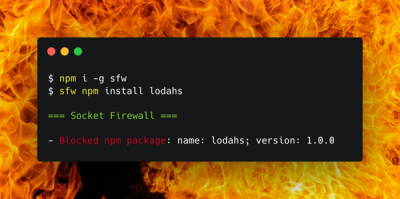
Security News
Package Maintainers Call for Improvements to GitHub’s New npm Security Plan
Maintainers back GitHub’s npm security overhaul but raise concerns about CI/CD workflows, enterprise support, and token management.
@aurigma/ng-rendering-service-client
Advanced tools
Angular API Client for Rendering service of Customer's Canvas web-to-print system.
This module is an Angular API client for Rendering service which is a part of Customer's Canvas web-to-print system. It is supposed that you are familiar with its services and understand how to use its APIs. To learn more about Customer's Canvas and its services, refer the Getting Started section of its documentation.
The API client is automatically generated with NSwag tool. If for any reasons this API client does not work well for you, feel free to generate it yourself using Swagger document published at Customer's Canvas API Gateway.
To be able to use this package, you need to meet the following requirements:
For other platforms, see the Backend services article in Customer's Canvas documentation.
Install it as a regular npm package:
npm install @aurigma/ng-rendering-service-client
Receive an access token through your backend as explained in the documentation and deliver it to your app.
Setup module parameters in the app.module.ts:
import {RenderingServiceModule} from '@aurigma/ng-rendering-service-client';
// ...
// Generally you can use "https://api.customerscanvashub.com" as an api url.
// But this url may be different for on-premises version of Customer's Canvas
const baseApiUrl = "https://api.customerscanvashub.com";
// A token should be received from your backend
const accessToken = "...";
@NgModule({
declarations: [
AppComponent
],
imports: [
BrowserModule,
HttpClientModule,
RenderingServiceModule.forRoot(accessToken, baseApiUrl, null)
],
providers: [],
bootstrap: [AppComponent]
})
export class AppModule { }
Now you can inject this module in your services. For example, imagine that you want to use it in a app.component.ts. For simplicity, we will just request a service version information. However, you can use other clients in a similar manner.
It may look as follows:
import { Component } from '@angular/core';
import { BuildInfoApiClient } from '@aurigma/ng-rendering-service-client';
@Component({
selector: 'app-root',
templateUrl: './app.component.html',
styleUrls: ['./app.component.scss']
})
export class AppComponent {
constructor(private buildInfo: BuildInfoApiClient) {
this.buildInfo.getInfo().subscribe(info => console.log(info));
}
}
To find out what other clients are available in this module, refer Rendering Service API Reference.
NOTE: The class name for each client is formed as ClientNameApiClient, e.g.
BuildInfo->BuildInfoApiClient, etc.
FAQs
Angular API Client for Rendering service of Customer's Canvas web-to-print system.
We found that @aurigma/ng-rendering-service-client demonstrated a healthy version release cadence and project activity because the last version was released less than a year ago. It has 4 open source maintainers collaborating on the project.
Did you know?

Socket for GitHub automatically highlights issues in each pull request and monitors the health of all your open source dependencies. Discover the contents of your packages and block harmful activity before you install or update your dependencies.

Security News
Maintainers back GitHub’s npm security overhaul but raise concerns about CI/CD workflows, enterprise support, and token management.

Product
Socket Firewall is a free tool that blocks malicious packages at install time, giving developers proactive protection against rising supply chain attacks.

Research
Socket uncovers malicious Rust crates impersonating fast_log to steal Solana and Ethereum wallet keys from source code.